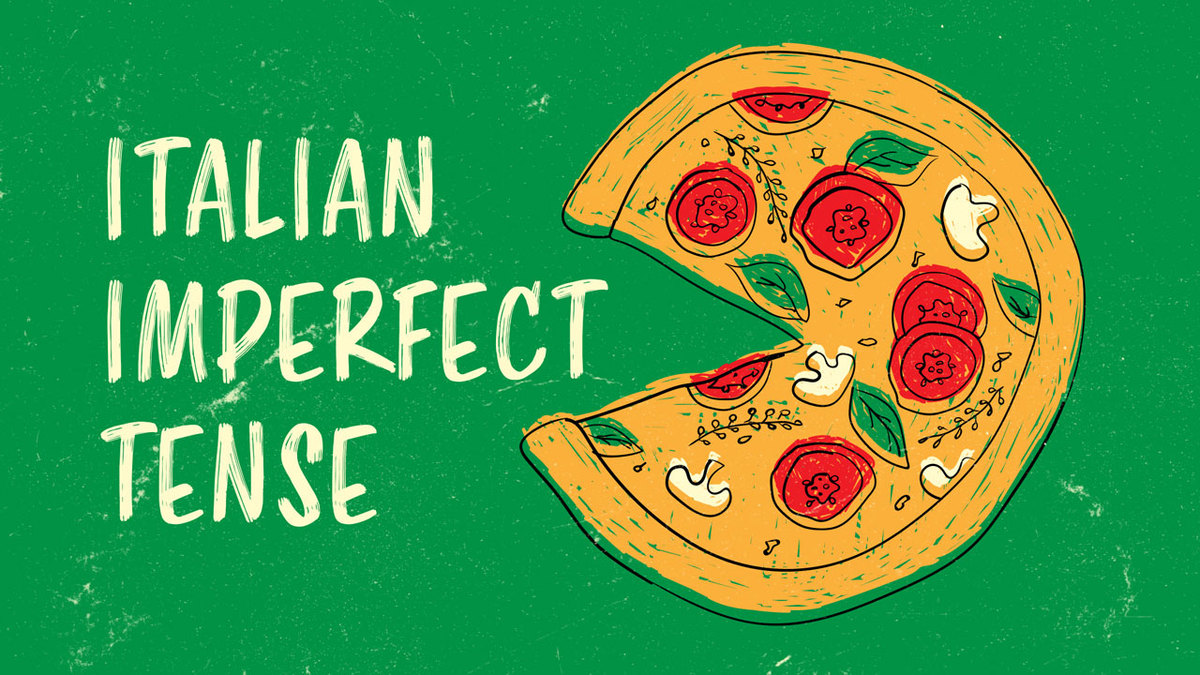Imperfect Italian Tense: Easy Language Hacks to Use It Like a Pro!
Confused by the imperfect tense in Italian? Or the Italian past tenses in general?
There are two main ways to talk about the past in Italian: the passato prossimo (perfect past tense) and the imperfetto (imperfect tense). But how do you know which one to use?
Let’s learn it together!
Table of contents
Imperfect Tense Vs. Perfect Past Tense in Italian
So what is the difference between the passato prossimo and the imperfetto?
The perfect past tense (not to be confused with the “past perfect” tense), is something like saying “I have eaten” in English. It’s got that extra “have” (in Italian, it can also have an extra “to be”) and some form of the action word.
In Italian, “I ate / I have eaten” would be ho mangiato.
The imperfect tense, on the other hand, is more like “I was eating” and in Italian is just one word, such as mangiavo.
Most grammar books explain this in complex ways, but let’s try to see if we can find a shortcut to decide when to use each form!
As a general rule, when in doubt, use the perfect past tense (avere / essere + “participle” of the action word).
If you guess wrong, don’t worry – you won’t have Italians scratching their heads in confusion.
Because these two forms are essentially like the difference between “I ate” and “I was eating” in English, they are just as understandable as one another. It’s just that one is more grammatically correct than the other.
Don’t get too intimidated by this – perfectionism is your enemy!
Constructing the Italian Imperfect Past Tense
Relate Learning: Language Hacking Italian: 10 Smarter Ways to Learn Italian
Constructing the “perfect past” tense in Italian is something I won’t get into here (I explore it in more depth in my guide, Why Italian is Easy). _
But I will show you how to construct the imperfect past tense in a simple way.
For most verbs, just look up the infinitive form in the dictionary, then just remove the -re from the dictionary (infinitive) form and replace it with:
- -vo for “I”
- -vi for “you”
- -va for “he”/ “she” / “it” / “you (polite)”
- -vamo for “we”
- -vate for “you” plural, and
- -vano for “they”
This works with all regular verbs.
That’s it! There are a few rare exceptions (the most important is ero, eri… the imperfect past tense of “to be”), but that one explanation will cover most situations for you.
When to Use the Imperfect Past Tense in Italian
Related Learning: 15 Online Language Lessons to Learn Italian for Free
The perfect past tense is the “default” tense to use when in doubt. You should only use the imperfect past tense when:
Describing the ongoing state of objects, places or people in the past.
Examples:
- Da piccola avevo i capelli ricci. – “When I was a child, I used to have curly hair.”
- Era un uomo coraggioso. – “He was a brave man.”
- La macchina era arrugginita. – “The car was rusty.”
You could add a “used to” or “would” in English to imply consistency in the past.
Examples:
- Ogni martedì ci incontravamo al bar. – “Every Tuesday, we used to meet at the bar.”
- Correva alla porta ogni volta che suonava il campanello. – “He would run to the door every time that the bell rang.”
Describing how a person was feeling or thinking in the past.
Examples:
- Aveva sonno. – “She was sleepy.”
- Gli faceva male la testa. – “He had a headache.”
- Eravamo tristi. – “We were sad.”
Discussing two things happening at the same time
While an “interrupting” event uses the perfect past tense, an ongoing event uses the imperfect past tense.
Example:
- Mentre guardavo la tv è suonato il telefono. – “While I was watching TV, the phone rang.”
There are other times when you’ll need to use the past tense, but these four points will cover you in most situations!
(Thanks to Transparent Language for the examples used!)
There’s no need to feel intimidated by learning Italian!
This blog post is an extract from my language hacking guide, Why Italian is Easy. Pick up your own copy here.



Social